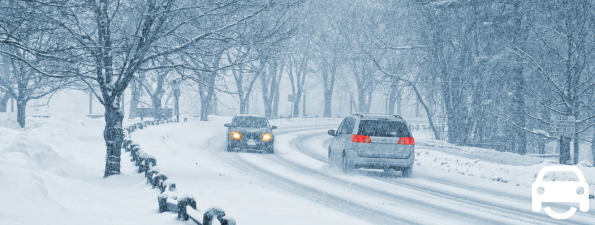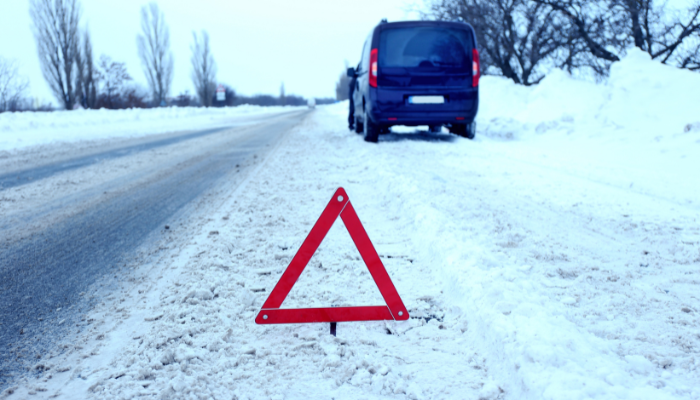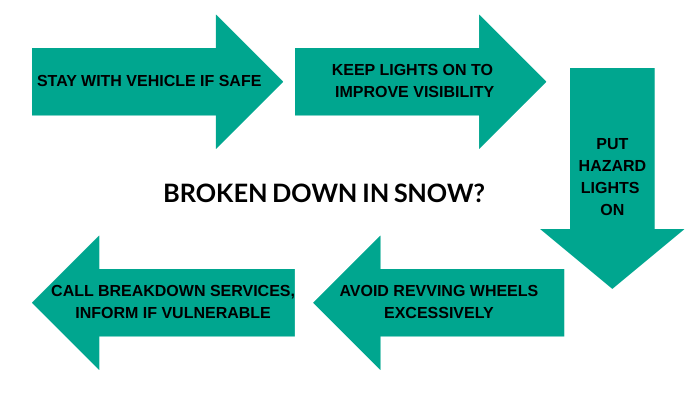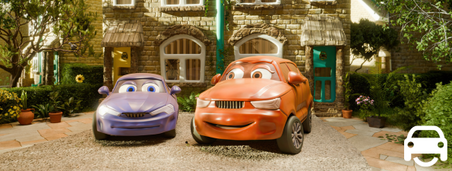MotorEasy Winter Driving Advice For Snow & Icy Conditions

Winter driving advice for snow & icy conditions
Driving in winter across the UK can be unpredictable. Snow, black ice, freezing temperatures and reduced visibility all increase the risks on the road. To stay safe, it’s important to prepare your car properly, adjust driving style, and understand how your car behaves on slippery surfaces!
This guide brings together clear winter driving advice and practical tips for driving in snow. Whether you’re dealing with early morning starts when the temperatures are below freezing, icy roads or even heavy snowfall, this guide gives you tips on how you can stay confident when driving this winter.
Why winter driving is more dangerous
Winter road conditions create several hazards that aren’t always visible:
· Longer stopping distances due to wet, icy or snowy surfaces
· Black ice, which is almost impossible to spot
· Low winter sun causing glare
· Sudden weather changes, especially in rural areas
Breakdowns also rise sharply in winter as batteries, alternators and tyres all fail more frequently in colder conditions.
To help manage these risks, MotorEasy Breakdown Cover provides rapid assistance for common winter failures like flat batteries, frozen components or tyre-related breakdowns - offering peace of mind when the weather turns. Understanding these winter driving risks is essential for navigating UK winter road conditions safely.
Essential pre-journey checks before driving in winter
Most winter incidents can be prevented with simple winter car safety checks. Before driving in snow, carry out the following:
| Category | What to check and how | Why it matters |
| TYRES | Minimum tread depth 1.6mm, use a penny or buy a depth gauge to check. Consider winter tyres. | Better grip, Shorter stopping distances, |
| BATTERY HEALTH | Look for slow starting, watch for flickering electrics. | Cold weather weakens batteries- Top cause of winter breakdowns! |
| FLUIDS | Use winter screen wash with antifreeze, Check oil and coolant level using dipsticks in bonnet. | Ensures visibility, Engine protection, |
| LIGHTS & VISIBILITY | Check all lights working by monitoring the reflection or get a friend to help you. Clean windscreen inside & out, Ensure heaters/ demister works. | Essential for safe driving in dark, wet or snowy conditions. |
| FUEL | Keep tank on at least half full, see fuel gauge on dashboard. | Prevents condensation, Prepares for delays/ diversions. |
How to drive safely in ice and snow
Follow these essential tips when driving in snow:
· Drive slowly with gentle movements
· Leave up to 10x stopping distance on ice
· Use higher gears to minimise wheel spin
· Avoid harsh braking
· Never use cruise control on snowy/icy roads
· Keep a larger gap between vehicles
These safety tips for driving in snow help reduce the likelihood of skidding or losing control.
If winter driving feels stressful, remember that MotorEasy Warranty protects you from unexpected repair costs if cold weather triggers faults in major components like suspension, electrics, steering and more.
Visibility, windscreens and de-icing tips
Poor visibility causes as many winter incidents as slippery roads. Follow these winter visibility tips:
| De-icing | Demisting | Snow Removal |
|
|
|
If your heater blower, wipers or washer system fail - all common winter faults, MotorEasy Warranty covers many of these components depending on your plan.
What to carry in a winter emergency kit
Your winter emergency kit UK should include:
De-icer & scraper- Torch- Jump leads- Blanket or warm layers- High-vis jacket- Water & snack- Phone charger- Shovel or traction mats.
Breakdowns are more common in winter - and waiting in freezing temperatures isn’t pleasant. With MotorEasy Breakdown Cover, you’ll get fast roadside rescue and recovery to keep your journey moving.
MotorEasy Support for Winter Driving & Cold-Weather Car Care
| Winter Car Warranty- covers major components affected by the cold giving you: | Breakdown Cover- making sure your never stranded giving you: | MOT and Servicing- assisting your car with it’s winter needs: |
Engine Protection, Electrical Cover, Suspension & Steering Support | Battery Jump-starts, Recovery, UK-wide Assistance | Dead/ Weak Batteries, Low Tyre Pressure, Failing Electrics, Worn Breaks |
FAQs About Winter Driving
Is it safe to drive in snow?
- Yes, if you drive slowly, use smooth movements and increase stopping distances.
How do I stop skidding on ice?
- Ease off the accelerator, steer gently and brake gradually.
Do I need winter tyres?
- Recommended below 7°C for maximum grip.
How slow should I drive in snow?
- As slow as needed to maintain full control.
What should I carry in my car during winter?
- A winter emergency kit including warm clothing, jump leads, scraper and power bank.
What to do when driving in snow for the first time?
- Keep movements gentle, leave large distances and avoid sudden braking or acceleration.
Is black ice common in the UK?
- Yes, especially early morning and on untreated or shaded roads.







